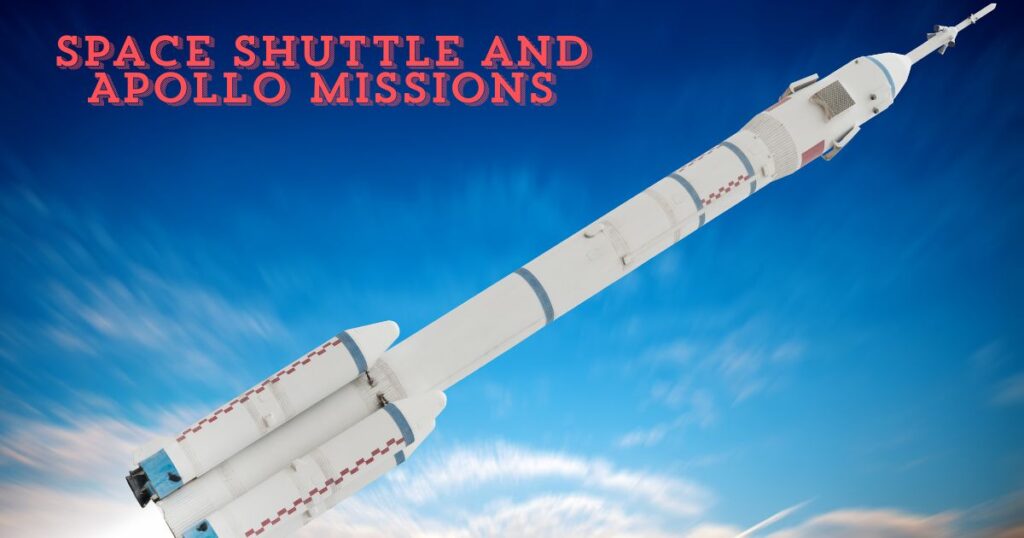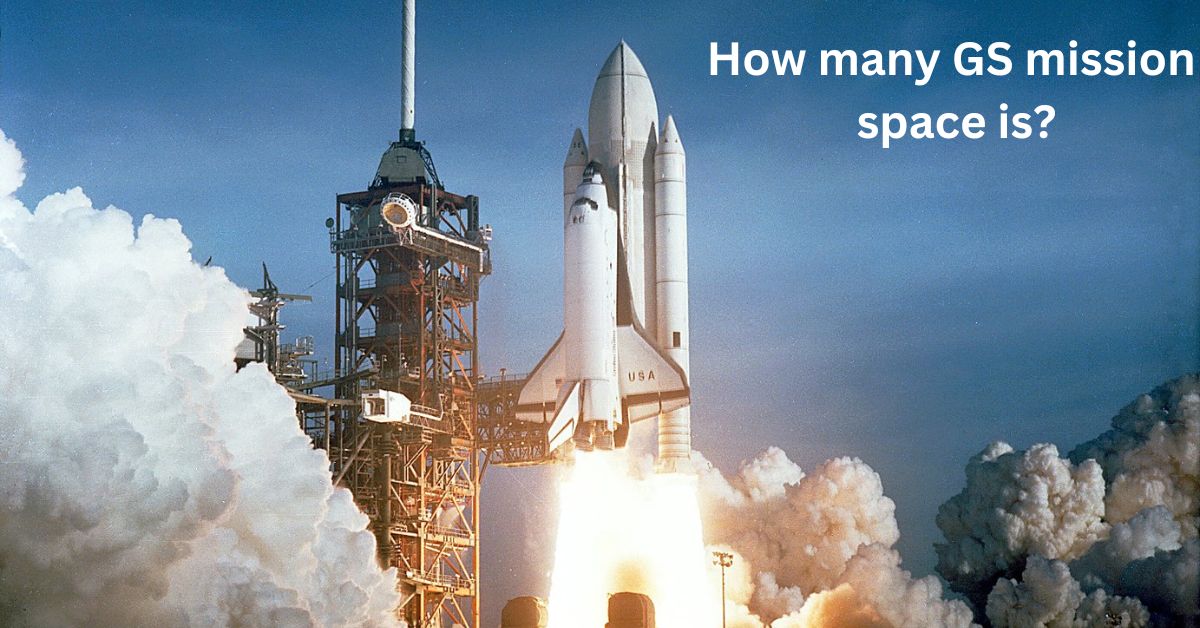Introduction
How many GS mission space is?
Space missions are a few of the most exciting and complex adventures that people attempt. One crucial aspect of these missions is understanding the G-forces (Gs) that astronauts’ involvement. G-forces are a degree of speeding up felt as weight. On Earth, we feel 1 G, which is the force of gravity. In space missions, space explorers’ involvement much higher G-forces during different stages of their travel. This article will clarify these G-forces in simple terms so that everybody can get it how they affect space travel.
Key Takeaways
Understanding G-forces is essential for planning spacecraft and preparing astronauts.
Here are the key takeaways from this article:
- Launch Phase: Astronauts involvement up to 3 Gs amid launch. This is a critical constrain but sensible with proper arrangement and equipment.
- Space Shuttle and Apollo Missions: These missions experienced changing G-forces, with peaks around 3-4 Gs during basic maneuvers.
- Mars Missions: Future missions to Mars will include gentler accelerations during the travel phase, making the travel more comfortable.
- Re-Entry: The re-entry phase involves the highest G-forces, up to 8 Gs, due to rapid deceleration.
- Spacecraft Varieties: Diverse shuttle handle G-forces differently, with advanced plans centering on minimizing these forces.
- Astronaut Preparation: Astronauts experience thorough preparing, counting centrifuge simulations, wearing G-suits, and keeping up physical fitness, to handle G-forces.
- Technological Advancements: Progressed rocket plans, in-flight alterations, and progressed spacecraft technology help manage and minimize G-forces.
- Historical Perspective: Understanding the advancement of G-force management from early space missions to advanced shuttle highlights critical advancements.
- Future Challenges: Missions to Mars and beyond will require new solutions for overseeing G-forces, counting potential use of artificial gravity and nonstop investigate and improvement.
What Are G-Forces?
G-forces are the forces of acceleration on a body. They are measured in units of gravity (G). For example, 1 G is the force we feel from Earth’s gravity. If you experience 2 Gs, feel twice the force of gravity.
Astronauts G-forces during various stages a space mission, such as launch, orbit, and re-entry. These forces are essential to understand because they affect design of spacecraft health of astronauts.
G-Forces During a Space Mission
1. Launch Phase
The launch phase is one of the most exquisite zone a space operation. Rocket must escape Earth’s gravity, which requires tremendous power and speed. During launch, astronauts can endure G- forces upward to 3 Gs. This means they feel three times force gravity.
-
How It Feels:
At 3 Gs, an astronaut’s body feels three times heavier than normal. Breathing can become more difficult, and their body is pressed into the seat.
-
Safety Measures:
To handle these forces, astronauts wear special suits called G-suits. These suits help keep blood flowing to the brain, preventing blackouts.
2. Space Shuttle and Apollo Missions

Space Shuttle and Apollo Missions
Different space missions experience varying G-forces. For example, the Space Shuttle missions limited G-forces to around 3 Gs during ascent to ensure astronaut safety Apollo missions, which took astronauts to the Moon, had different stages with different G-forces.
-
Apollo Missions:
During certain maneuvers, such as the translunar injection burn (the engine burn that sends the spacecraft to the Moon), astronauts could experience up to 4 Gs
.3. Traveling to Mars
Future missions to Mars will involve different G-forces. The journey will have two main stages: getting into orbit and traveling to Mars.
-
Orbit Stage:
Similar to current missions, getting into orbit might involve around 3 Gs.
-
Traveling to Mars:
This stage is expected to be much gentler. Advanced propulsion technologies, like ion engines, provide continuous but very low acceleration, making the journey more comfortable.
4. Re-Entry and Landing
Re-entry is when the spacecraft returns to Earth. This phase involves high G-forces because the spacecraft slows down rapidly as it enters Earth’s atmosphere.
-
Typical Forces:
Astronauts can experience up to 8 Gs during re-entry. This is a significant force and can be very stressful on the body.
-
How It Feels:
At 8 Gs, an astronaut feels eight times heavier than usual. Breathing and movement become extremely difficult.
Variations in G-Forces by Spacecraft Type
Different spacecraft are designed to handle G-forces in various ways. Let’s look at some examples:
1. Soyuz Capsule
The Soyuz capsule, used by Russian space missions, is designed for a smoother ride. It limits G-forces to around 3-4 Gs during launch and re-entry
2. Crew Dragon
The Crew Dragon spacecraft, developed by SpaceX, focuses on minimizing G- forces to enhance astronaut comfort and safety. It uses advanced technology to manage the forces endured during different charge phases.
How Astronauts Prepare for G- Forces

How Astronauts Prepare for G- Forces
Astronauts suffer expansive training to prepare for the G- forces they will experience in space. since are some crucial medication styles
1. Centrifuge Training
Astronauts train in a centrifuge, a machine that simulates high G- forces. The centrifuge spins them at high speeds, creating forces parallel to those they will feel during launch andre-entry.
2. G- Suits
As mentioned before, astronauts wear G- suits to help manage the goods of high G- forces. These suits have air bladders that inflate and squeeze the body, helping to keep blood flowing to the brain.
3. Physical Fitness
Astronauts maintain excellent physical fitness to handle the stresses of a space trip. Strong muscles and cardiovascular health are pivotal for managing with high G- forces.
How Astronauts Prepare for G- Forces
Understanding Acceleration
Acceleration is the rate at which an object’s speed changes. In the setting of space operations, speeding up happens when a rocket supplements its speed to elude Earth’s gravity. This quick boosting speed is what causes the high G- forces felt by space explorers.
The Part of Gravity
Gravity is the constrain that pulls in objects towards the center of the Earth. On the surface, we encounter a gravitational constrain of 1 G. When a rocket accelerates upwards, the force of gravity combines with the speeding up of the rocket, resulting in higher G-forces.
Effects on the Human Body
High G-forces can have critical impacts on the human body. At 3 Gs, astronauts feel three times their ordinary weight. This can make breathing troublesome and put weight on the cardiovascular system. At 8 Gs, the impacts are indeed more articulated, making it greatly challenging to move or breathe.
Technological Advancements to Manage G-Forces
Advanced Rocket Design
Modern rockets are designed with progressed technology to manage and minimize G-forces. This includes the use of different stages in rockets, where each stage gives a parcel of the add up to pushed required to reach circle. By utilizing different stages, rockets can distribute the increasing speed more equally, decreasing the peak G-forces experienced by astronauts.
In-Flight Adjustments
During a mission, rockets can make in-flight alterations to oversee G-forces. For example, engines can be throttled back to diminish increasing speed during basic stages, such as the starting launch and re-entry.
Improved Spacecraft Design
Spacecraft like the Crew Mythical beast are designed with a focus on minimizing G-forces. These plans incorporate progressed shock safeguards and uncommonly planned seats to offer assistance disseminate forces more evenly and reduce the impact on astronauts.
Historical Perspective on G-Forces in Space Missions
Early Space Missions
In the early days of space exploration, understanding and overseeing G-forces was a critical challenge. Early rockets, such as the Vostok and Mercury capsules, experienced exceptionally high G-forces amid dispatch and re-entry. Astronauts in these missions had to persevere these forces with less progressed technology and preparation.
The Space Shuttle Era
The Space Shuttle program checked a critical headway in overseeing G-forces. The Shuttle was outlined to restrain G-forces during launch to around 3 Gs, making it more comfortable and more secure for astronauts. This design included progressed designing techniques to disseminate powers more equitably throughout the spacecraft.
Modern Spacecraft
Today, modern spacecraft like the Soyuz and Crew Winged serpent consolidate the most recent technology to manage G-forces. These advancements have made space travel more secure and more comfortable for astronauts, permitting for longer and more complex missions.
The Future of Space Missions and G-Forces
Missions to Mars and Beyond
Future missions to Mars and other far off destinations will include unused challenges related to G-forces. These missions will require progressed propulsion systems that can give ceaseless but delicate acceleration to minimize the impact on astronauts.
Artificial Gravity
One potential arrangement for overseeing G-forces in long-duration space missions is the utilize of fake gravity. This seem be accomplished through turning shuttle or other progressed technologies that reenact the impacts of gravity, helping space travelers maintain their health and consolation during amplified missions.
Continued Investigate and Development
Ongoing inquire about and advancement in space technology will proceed to center on understanding and overseeing G-forces. This incorporates examining the impacts of G-forces on the human body, creating new materials and technologies to moderate these forces, and planning spacecraft that can handle the unique challenges of space travel.
FAQs About How many GS mission space is?
1. How do G-forces influence astronauts during a rocket launch?
During a rocket dispatch, space travelers encounter up to 3 Gs, which implies they feel three times the force of gravity. This high level of speeding up can make their bodies feel much heavier, making it harder to move and breathe. Uncommon G-suits help oversee these strengths by keeping blood streaming to the brain, anticipating blackouts.
2. Why are G-forces higher during re-entry compared to launch?
Re-entry includes decelerating the spacecraft from high speeds as it enters Earth’s atmosphere. This quick slowdown makes G-forces up to 8 Gs, which is altogether higher than the 3 Gs ordinarily experienced during dispatch. The higher forces are due to the seriously deceleration and barometrical resistance faced by the spacecraft.
3. How do modern spacecraft like Crew Dragon minimize G-forces for astronauts?
Modern spacecraft like SpaceX’s Group Mythical beast utilize progressed technology to minimize G-forces. This includes advanced shock absorbers, extraordinarily designed seats, and the capacity to throttle engines to oversee increasing speed and deceleration more successfully. These advancements help distribute forces more equitably, improving space traveler comfort and safety.
4. How do astronauts prepare to withstand high G-forces?
Astronauts experience extensive preparing in a centrifuge, which mimics high G-forces by turning at high speeds. This preparing acclimates them to the powers they will encounter amid dispatch and re-entry. Also, they keep up high levels of physical wellness to guarantee their bodies can handle the stresses of space travel.
5. What headways are being made to manage G-forces in future Mars missions?
Future Mars missions will likely use progressed drive technologies, such as particle engines, which give nonstop but moo increasing speed. This approach comes about in gentler G-forces during the travel stage. Additionally, there is progressing inquire about into artificial gravity and other developments to help keep up astronaut health and consolation during long-duration missions.
Conclusion
Mission Space offers a thrilling glimpse into the world of astronaut training, with the Orange mission providing a realistic simulation of a space launch at approximately 2.5 Gs. For a safe and enjoyable visit to Epcot’s Mission Space, remember to choose the mission that best suits your adventure level and fitness level.

